If you’re new to prepping, you have no doubt encountered the acronym SHTF at some point. But what is SHTF? Understanding SHTF is more than just what the letters stand for, but what they mean for you and your loved ones.

What does SHTF mean?
The letters SHTF are an acronym for Sh*t Hits the Fan. It is one of many prepper acronyms. The phrase poses a strong, chaotic visual. Excrement crashing into a fan and being sprayed across the room in every direction with no rhyme or reason, covering everything in its path with poop. It’s not difficult to imagine the kind of event that someone would connect to the expression.
This is the reason that so many in what is called the prepper movement have decided to make this expression a universal term in their vernacular. The prepper movement is composed of people that look at potential future calamities and take actions to prepare them and their loved ones to survive those scenarios. (See What is a prepper?) The acronym is so popular and understood that this blog even adopted it in its title.
The events that are associated with any SHTF situation are part of the reason that the prepper movement even began. The notion that at any moment a catastrophe could strike and throw everything we know and love to the wind, is enough of a reason for people to buckle down and prepare ways to keep themselves safe. Prepping for SHTF is commonplace now. Even the federal government has a website devoted to it.
What does WTSHTF mean?
Adding the extra two letters it extends the acronym into a full sentence. WTSHTF stands for When The Sh*t Hits the Fan.
This acronym might seem redundant, but WTSHTF usually precedes a discussion on the active planning to overcome the plethora of potential SHTF events.
Example: “WTSHTF, I’m going to bug out to my uncle’s farm.”
While it may seem grim to assume that there will be a complete collapse of the modern lifestyle, there’s a certain calming comfort that preppers receive from addressing their capabilities of surviving said situations. This is the nature of prepping itself. Prepping is personal insurance. Automobile owners buy car insurance. Homeowners buy home insurance. Preppers create their own SHTF insurance for WTSHTF.
Various SHTF Scenarios

Now that it’s clear what SHTF stands for, both as an acronym and a concept, it’s time to explain some of the situations that SHTF would pertain to. The easiest way to order them is according probability, what the most likely SHTF event to happen to you is to the least likely. Everyone’s personal situation may differ (example: job loss comes first, but not if you’re retired). What follows should apply to most, however.
Job Loss
Out of every possible situation that will change the way you navigate the world, losing your job is not only the most likely to happen, but probably one of the first hardships you’ll encounter as other scenarios begin to wreak havoc. More than that, it’s one of the few scenarios that can put you into a state of emergency even if those around you aren’t experiencing anything that you are. Your own personal world will fall apart and if you fail in preparing for it, there are serious and long-lasting consequences. Job loss is a personal SHTF situation.
Imagine you work in a high-risk job where one negative encounter with a client or major mistake on the job site will cause your boss to send you packing without a second chance. Or your small business that you’ve put every waking moment into cultivating is suddenly forced to close its doors and is no longer a reliable form of income that you’re scrambling to replace.
Even as other scenarios occur, people’s jobs are one of the first things to be affected. Especially if those positions are considered “non-essential” or are dependent on discretionary things like tourism and recreation. The main concern of job loss is that if you’re not prepared to deal with it, you’ll feel the pressure the moment you can’t provide for you or your family. Nothing builds pressure quite like the lack of food or a safe place to live.
If the source of your job loss is something more widespread, as situations worsen, there will likely be mass layoffs/firings to the point where there won’t be jobs for you to get to replace the one you lost, leaving you as destitute and desperate as those around you.
Natural Disasters
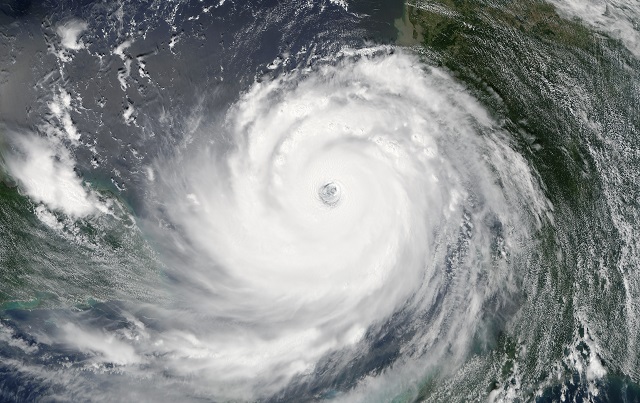
Next on the list, and probably the most talked about situation, are natural disasters. Even the smallest bit of power that nature can deal out onto us has the capability to take away most of our creature comforts, let alone our lives. Because of how unpredictable the timing of these events is, it makes the preparation for them even more important. Preparing for natural disasters also depends heavily on the area where you live as some disasters are specific to those areas. I’ll summarize the most common natural disasters below.
Earthquake
One of the least predictable disasters to strike mankind is the earthquake. The worst ones happen across fault lines in the earth’s crust, but the impact of the largest ones can spread much further than just the immediate vicinity. Earthquakes have been the cause of other natural disasters such as tsunamis and urban fires, not to mention having the capability of collapsing buildings and infrastructure!
While there have been many improvements in technology to protect people and buildings from earthquakes, the amount of damage that can still be done during an earthquake can quickly incapacitate an entire city or community’s normal level of functioning. Aftershocks are also a concern. While they may be less severe, they can still wreak some havoc when you least expect it.
On top of the obvious damage that can be caused by earthquakes, large landslides and sinkholes can deal out even more destruction to the areas where the earth is less stable.
Flood
Floods can affect many areas across the country, from rural farmland to coastal cities. They can come in several forms, yet each kind can have the same destructive power to the areas they affect. Not all floods are the same and each have different characteristics that should be addressed when preparing for them.
Common Types of Floods
Coastal flood. These floods occur in coastal areas as the name implies. These are created when seawater is pushed up onto the land by either tsunamis or storm surges. A storm surge is when a high tide is combined with a severe enough windstorm to literally push the water onshore.
The size, strength, direction, and even speed of the windstorm greatly affects the severity of the flood. Combining the rush of water with the coastal topography, saltwater can quickly sweep throughout areas that sit in its direct path. Since tsunamis also can cause these kinds of floods, if there happens to be an earthquake close enough to a coastal area, a flood may soon be on its way and is a serious concern to be accounted for.
Fluvial flood. Fluvial floods are floods that happen when the water levels of a stream, lake, or river surpass the height of their banks and rush across the neighboring land. Since lakes, rivers, and streams are so interconnected the effects of a flood can be caused much higher upstream than where the damage is happening. The flooding of a lake with excess rainwater or snowmelt will cause the river to swell which in turn will make the tributaries fill up past their capacity, leaching out water into the surrounding topography.
Many cities, towns, and farms line the banks of major rivers and creeks due to human’s need for water for sustenance, transportation, and agriculture. Any flooding in these areas can be devastating but the severity depends on several factors including, intensity of rainfall, the soil’s capability of retaining said rainfall, and terrain. Flatter terrains will cause floods to be shallower, but they will last much longer. While flooding in steep or mountainous regions will have quick durations, most destruction will come both with the debris that the current will pick up as well as the potential to break dams and dikes spreading the flooding further.
Pluvial floods. Pluvial floods prove that you don’t have to even be near a major natural water source for floods to affect you. Pluvial flooding is when a flood, independent from an overflowing body of water, is caused by a significant amount of rainfall in an area. Of the types of pluvial flooding, two of the most common are:
- Surface Water Floods. Surface water floods happen in urban areas as their drainage systems become so overwhelmed that they begin to pour into the city streets as well as buildings. They are very noticeable and grow very slowly, giving the people affected plenty of time to evacuate to a safe and dry area. There is really no threat to people’s lives when it comes to these kinds of floods. But since buildings can’t move like people can, most of the harm comes in the form of economic damage.
- Flash Floods. As the name suggests, a flash flood is one that comes nearly out of nowhere with destructive consequences. A massive amount of rainfall, or the unexpected rush of water from an open dam, causes a swift and intense current that hurtles across the topography picking up all sorts of debris along the way. Many areas have the potential for being affected by flash flooding due to the manipulation of the landscape from human development. The quick and intense nature of these floods gives more than enough reasons to create plans to prepare for the damage they can cause.
Wildfires
Vivid images come to mind when thinking about the extent that even a small flame can grow into. Dark ruby embers scorching everything in a carnivorous frenzy as the flames spurt dark ash into the sky. As destructive as water can be to a landscape, fire can be just as much of a problem. Fire doesn’t just affect arid desert areas, as long as there’s enough fuel and a hot enough starter, fires can erupt anywhere.
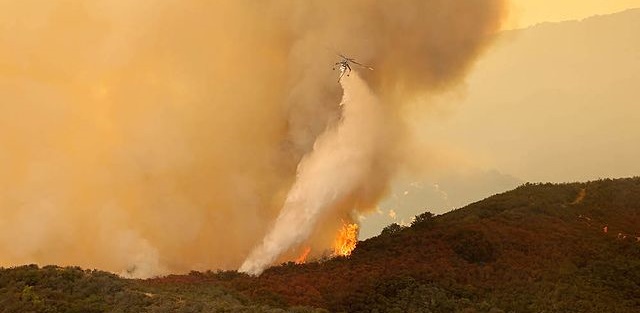
Wildfire causes. Specifically in the United States, humans are the number one cause of wildfires. From unattended campfires, improperly discarded cigarette butts, to even intentional acts of arson, some of the deadliest fires have started because of someone’s carelessness.
Other causes, man-made or natural, are:
- Sparks from engines or failing equipment
- Fireworks
- Lightning
- Prescribed fires gone wrong
- Volcanic eruptions
Comprehending the man-made causes is fairly simple yet when talking about lightning caused fires, it gets a little more intricate.
Lightning consists of two major components, strokes and leaders. Leaders are the branches that arc down to the earth from the cloud, and strokes are the returning current back up through the leader. The stroke is that awe inspiring flash of light that we see.
The other distinction with lightning is that there are two kinds, hot and cold. Cold lightning is characterized as an intense electrical current with a very small duration. Hot lightning has less voltage but it lasts for significantly longer periods of time.
When lighting causes a fire it’s normally irregularly long lasting bolts of hot lightning.
Types of wildfires. Not all fires will burn the same. Fuel type and causes often determine what parts of the forest burn as well as how long, intense, and fast they will burn.
- Ground fires (or underground/subsurface fires). These fires exploit the deeper layers of dead vegetation that have accumulated and dried enough to burn. They spread slowly but can be hard to put out due to the fact they can smolder for months then relight all over again.
- Surface fires. The easiest of wildfires to put out, as they only burn up the lighter leaf litter and dry vegetation that can catch on fire quickly. These also cause the least amount of damage to the forest.
- Crown fires. The most intense of wildfires, these fires scorch the entire length of trees causing massive amounts of damage and spread quickly across landscapes.
The destruction that wildfires cause impacts more than just man-made structures, it also impacts the immediate ecosystem. Fire has always been a part of the natural cycle, creating regrowth that many animals (particularly ungulates, like deer and elk) utilize for food and cover. These reproduction areas can be a hot spot to keep an eye out for if you need to hunt these animals, it just takes a few years before they become productive.
Grid Down
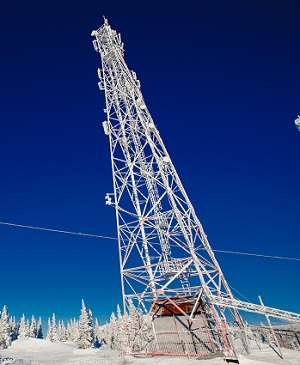
Many of the infrastructures that give us the ability to lead the comfortable lives we lead depend on electricity. The massive network of wires and equipment to provide us this electricity is called the grid. For better or worse, you can see the literal web that connects our homes and businesses to the massive power source. Powerlines border almost every road across America, both rural and urban alike.
Fortunately, the open layout of these lines makes it simpler to gain access to the grid versus having the lines lay underground. Unfortunately, this leaves them exposed and susceptible to potential damage from a number of causes, such as:
- Storms. Not surprisingly the destructive force that mother nature throws down on us can easily tear down power lines, leaving the immediate area devoid of power and requiring technicians and specialists to come in and fix them before power can freely flow again. If the weather is bad enough, or the crews cannot make it to the site, this can take a significant amount of time.
- Trees. Many times, power lines are set up alongside trees, and many times this doesn’t have too many repercussions. But as trees grow in size, die and become structurally weak, or get blown over by storms, they can land on power lines damaging them or causing them to short out. On top of the maintenance crews having to repair the electrical equipment, there has to also be someone to take care of what remains of the tree. Adding onto the time it takes to return power.
- Vehicle accidents. Like with anything humans create, humans can also do a large amount of damage to their own creations. Whatever the reason that it happens, sometimes people just run into the utility poles that keep power lines in the air. This can have a lethal result for those in the car and surrounding bystanders, both by the impact of the car and falling pole. Also, the severed power lines will have exposed wiring that still has the powerful current flowing through them.
- Animals. If you spend even a small amount of time looking at powerlines, you’ll see that humans aren’t the only ones that use power lines. It’s common to see flocks of birds taking a break from their day’s flying on them, squirrels also use them as shortcuts. Because of this sometimes accidents happen, as an animal will find themselves in the unpleasant situation of getting fried by the electricity that should be going to your T.V.
- High power demand. The more people use electricity, the higher the demand for its production. During times of unusually high demand the grid’s equipment will have to work harder to keep up, which can lead to the meltdown of the equipment. High demand can also be caused by other power outages as less and less equipment is available to meet the surrounding power needs.
Cyber Attack
As dependent on electricity as we are in this modern age, we are just as dependent on computers and the internet. Especially within the last two decades, there have been more and more services that have become all but completely digital. Banking, shopping, communication, entertainment, etc. All of these can be accessed with a working computer and an internet connection, which also means that they can be susceptible to being hacked. It’s common knowledge that computers can be infected with software viruses that can leak personal information.
There’s a possibility that either a foreign government or other entity could have the capability and intent to cause a massive cyber-attack. Institutions such as hospitals, government agencies, and other critical service organizations could be incapacitated due to their reliance on electronic data collection. While it may not last as long as other scenarios it could cause a significant amount of chaos which could lead to other scenarios.
Nuclear War
This is one of the most popular examples of an extreme SHTF scenario. Since the time of the initial arms race, there’s been a threat of the countries that possess nuclear weapons getting into dire enough conflicts to turn and use them on each other. Especially in the first few decades after the second world war, people felt pressure from events like the Cuban Missile Crisis and went to great lengths to try and protect themselves if America were to be attacked.
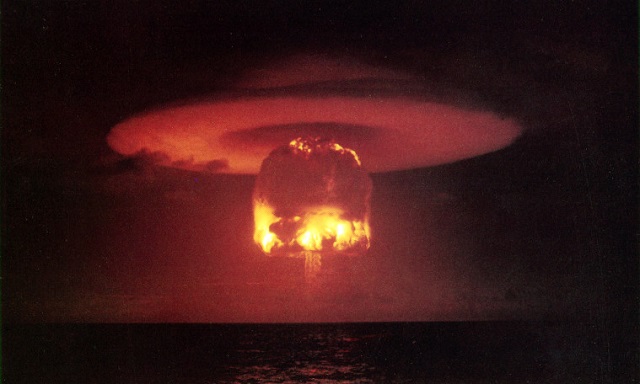
After the initial impact of the missile the hazards one would face include:
- Fire and heat. The reaction of the explosion will send out an enormous amount of energy in multiple forms, one is a blast of fire and intense heat. The most dangerous will be closest to the initial impact and reach out for several miles.
- Blast wave. Explosions cause waves of energy that can have the power enough to damage buildings, nuclear explosions are no exception to the rule. Being one of the most powerful events known to man the blast wave caused by a nuclear weapon will have significant impacts on both manmade and organic materials.
- EMP (Electromagnetic Pulse). A nuclear bomb that explodes in the atmosphere has the potential to create an EMP, and in many ways, could be worse than striking the ground. This is particularly dangerous to our way of life as we know it today, since almost everything we do depends on electricity. From our phones to our cars, there’s hardly anything that’s independent from even a little bit of current. It really would only take only a small amount of disruption to seriously incapacitate much of what we do on a day-to-day basis.
- Radiation. One part of the nature of nuclear power is that it gives off massive amounts of radiation. Human bodies are not capable of withstanding radiation for long periods of time, especially in acute concentrations that a nuclear blast would pose. Radiation also leeches into organic material and can stay for decades upon decades, posing a longer threat than most other kinds of energy given off by the blast. Radiation causes all sorts of health concerns in the human body by disrupting its function on the cellular level.
- Fallout. In tandem with the threats posed by radiation, a nuclear blast will potentially throw up so much debris and ash far into the air, that it will spread for miles. Other than obstructing the sun from reaching the earth’s surface, the radiation from the blast also gets absorbed into the debris. This spreads the potential radiation poisoning across a larger area than the blast itself. This also could lead to a mass die off both plants and animals, making it much more difficult for the survivors to acquire sustenance.
SHTF scenarios are complex and varied. We have only scratched the surface here. When all is said and done, there will probably be more than one that will strike at the same time making things even more complicated.
This certainly can feel a little overwhelming, especially if you’re just starting to mentally address the concept of your life becoming upended. Yet you don’t have to sit and stew in that anxiety, there are steps you can take to better prepare yourself for these scenarios. Like with any preparation it all starts with a plan.
Developing a Personal SHTF Plan
What do you do WTSHTF? You can’t possibly come up with all of the potential outcomes of each scenario that can happen to you. While that may seem discouraging, it allows you to devise a strategy that can be open to change and enable you to adapt to any change that may come down the road. Any plan is immensely better than no plan, especially when your life or the lives of your loved ones are involved. Plus, a plan for one SHTF scenario is apt to benefit you for many other SHTF scenarios.
There are a few ways that you can begin to develop a SHTF plan that fits within your life’s situation.
What are your needs?
The first step you need to take when devising your strategy is to take an honest inventory of the various needs you will be responsible for once all hell breaks loose. Examples of personal and family needs follows.
How many people do you have to take care of?
Are you a family of five? Are you going to be a part of a survival community? The amount of people that you’ll be surrounded by will determine just how many overall supplies you’ll need. This will include things like:
- Food
- Water
- Clothing
- Shelter
Are there any special needs?
Is there somebody in your party that has asthma? Or perhaps there’s someone who can’t get around without a wheelchair. Who among your party is dependent on a certain kind of medication? Are there any severe allergy cases in your group?
These are important questions to answer inside of your plan because the answers can pose serious considerations for what kinds of supplies you’ll need, as well as determine the areas that you’ll have to keep close to in order to keep those supplies in stock.
What natural resources are you near?
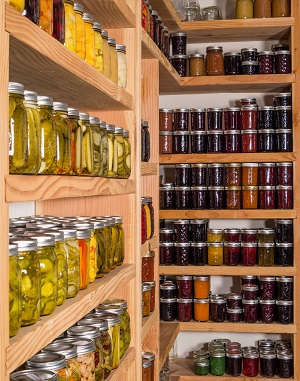
There are only so many man-made resources that are available. No matter how many supplies you can stockpile there will come a time where it all runs out. You will eventually have to utilize what’s available from mother nature. Make sure to take stock of not only what’s in your immediate region but keep an eye out for the surrounding regions in case you have to relocate. This also includes finding the water sources that will enable you to have clean drinking and cleaning water.
Where are the animals on the landscape you’re living on? What time of year are they migrating? There will be a massive need for food as the agricultural industry crumbles, and with the massive evacuation of urban people into the countryside, wildlife will become increasingly anxious and hard to track down. Study up on the local wildlife to gain a better understanding of their behavior which will allow you to jump ahead of the learning curve and help you in obtaining sustenance.
As well as wildlife, there are thousands of types of plants that are not only safe to eat, but can give you critical nutrients and vitamins that you won’t find in meat. Each season of the year provides a different menu for you to go out and forage for. It’s important to learn the preferred habitat of the plants in your region so that you don’t expend more energy than you’re taking in.
What transportation options are available to you?
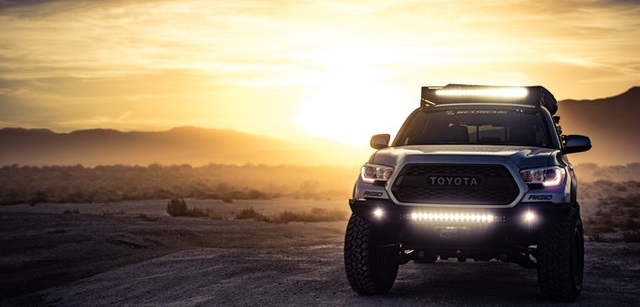
If you have a car, will it perform in harsh conditions? What will you use to get around if your car breaks down, or if the roads are destroyed or blocked off? If a car isn’t an option for you try considering smaller vehicles. Electric bikes can be a solid option, if you have the capability of charging them. They are much quieter than most motorized travel as well as being able to still be viable if the motor breaks down.
If you can use water to get from point A to point B then consider utilizing canoes or kayaks to float around. Getting to know the best travel routes of your region’s navigable areas will allow you to be able to plot out routes that can make the difference between being overrun by, or escaping a potential threat.
Do you have appropriate gear and equipment?
Humans are creative problem solvers by nature, which means that over the centuries we have created tools to solve even the most mundane of problems.
Do you have the necessary knowledge?
When preparing for SHFT scenarios it can be easy to think that the more expensive, intricate, and large tools and gear you have the better off you will be. The reality of the situation is that it doesn’t matter what you have if you’re not familiar with how it works. You can accomplish large tasks with even the smallest tools if you know its capabilities. Practicing with your tools and learning how to utilize the gear you have in the kinds of conditions you will endure in a survival situation can be the difference between life and death.
A popular way people practice these skills is to plan out trips out into the regions that will test the skills you’re perfecting. This needs to be done in a safe manner especially if you’re just starting out. It’s smart to begin in your backyard to first test your gear in a safe controlled environment. After that you can slowly work your way up to spending days or weeks at a time in intense wilderness areas. Be sure to either take a buddy with you or to at least let people know where you’re going so that you can ensure your safety. It’s too easy to push it too far. Make sure you stay within your capabilities and responsibly challenge yourself.
Are there travel considerations?
When selecting gear you have to consider the weight, durability, and energy it takes to use. Are you taking gear with you if you need to “bug out”? If your plan is to stay in one area, like a homestead, then weight won’t be much of an issue and you can even invest in large construction equipment. You’ll also have copious amounts of room to store much more supplies.
If your plan requires you to be more mobile, or you’re forced to leave your homestead, then the kinds of gear you’ll need completely changes. The kind of transportation you have will be a part of what kind of equipment you can bring. Traveling with a large truck will allow you to bring a lot more gear than if you have to carry everything in a backpack.
If part of your SHTF plan involves having to be mobile, you need to account for the possibility that you’ll have to survive on only what you can carry on your body. Weather and time of year can greatly impact your ability to travel. A SHTF event during the winter could mean roads won’t be plowed. Roads could also flood much quicker as the sewer and drainage systems will back up. If you are able to travel with motorized vehicles, make sure to stock up on supplies to maintain those vehicles and to ensure you don’t get stuck far away from home and no quick way to get back.
What is the quality of your gear?
Not all gear is created equal. Certain types of gear are better suited for different regions. As much as the elements are going to try taking you down, it will also steadily chip away at your gear too. Sometimes cheaper gear and equipment won’t be able to keep up in harsher conditions. In wet environments rust will corrode anything metal, and fry anything using electricity if you cannot keep water off or take the time to maintain your tools. Choose items that are either coated in rust resistant materials or become very proficient at keeping your gear in tip top shape.

Dry, arid environments are typically in areas that reach high temperatures throughout the year. While they certainly don’t have the same destructive force on tools as wet climates do, overheating in both you and your equipment is a serious concern. You may also need specific equipment to be able to access water that isn’t near a homestead.
Don’t dismiss your own impact on gear. You’re just as likely to break your gear as the weather is. Under normal situations accidents may make us looking like bumbling idiots. But in a S.H.T.F situation, an accident can be deadly. A broken ferro rod in the middle of a blizzard, a well pump breaking down with no way to fix it, accidentally leaving your car lights on and draining the battery. These are all things that can impact whether you’ll be able to survive or if your efforts fall short.
Do your research. Practice and Accommodate. You’ll be happy you did.
The Importance of Shelter
Do your SHTF plans include you being nomadic or settling in place? What works for one person may not work for the other. A college student living on campus may need to plan for a bug out bag and the ability to be mobile. A home owner living in a rural area with a family may need to shelter in place no matter what.
In the utter chaos of society collapsing, there will be risks you’ll have to take. Most of us live in suburban or urban areas, and while being stacked on top of each other may work there when there’s an order to evacuate any open space immediately outside of those areas will get filled up fast. Do you have the wherewithal to protect your shelter for personal and financial survival?
Shelter in Place
For some, it’s worth the time, money, and effort to establish a permanent homestead that they either already live on, or is ready for them when they have to evacuate. To turn a homestead into a self-sustaining and effective option takes years of intense work and dedication, with as many ups and downs as you can imagine. If you plan on eating something other than canned food, you’ll have to raise animals and grow crops. These add to the amount of resources you need to keep their health (and yours) maintained. You will still have to branch out when you need to resupply or if you accidentally overuse the natural resources.
On the Move
For those of us who have neither the time nor the money to set up such an intricate home base, there will be a whole new age of nomadic lifestyles; at least until the initial panic and dispersal has blown over and people start to settle areas and begin anew. Another reality is that your homestead may get invaded and you get evicted by force, losing everything. Or you show up and your new home isn’t yours anymore and you have to rethink your options.
It will take time to find the safe areas for you to put in roots, and even then things can always change. Knowing where the natural resources and safe-but-effective travel routes will improve your chances. You’ll be completely dependent on your skills to obtain natural resources to sustain you and your loved ones as there’s no way you can carry the same amount of food as you could have on a homestead.
Shelter Options
Shelter is one of the most critical needs in any situation. When our houses are no longer a viable option, we’re going to have to find a new home. Those that are accustomed to camping are used to using temporary shelters for short periods of time, but in extreme weather something a little more durable may be needed. Any shelter can keep you safe as long as you can maintain it.
Houses. Any modern built buildings are strong but can take a lot of resources to maintain.
Cabins. Cabins can be as durable as a home but because they’re smaller they can be easier to keep up with. You can make/buy/find them either very primitive with no modern conveniences, or as comfortable and accommodating as a home.
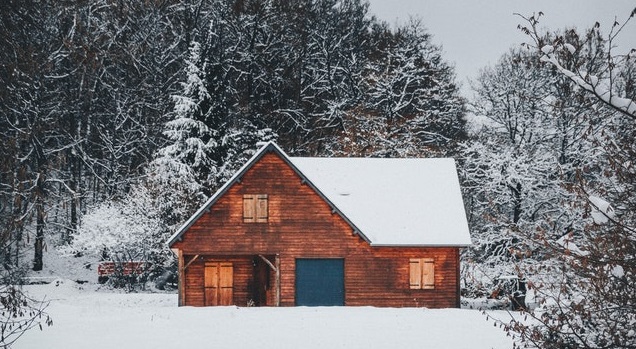
Improvised shelters. You need to be both creative and skilled to make the most of these. Depending on your situation, you may need to make simple, quick, and effective structures or you’ll have to take some more time and build something more weatherproof.
Utilizing natural building materials such as logs, leaf litter, boughs of pine trees, and anything you can use to secure them together, can allow you to adapt to the situations that arise. Be sure to experiment with local fauna for what will work best in keeping you safe and warm.
What natural risks are around you?
Like I previously described, natural disasters are one of the most common scenarios to be preparing for. Yet not every disaster happens in every part of the world, you won’t be very likely to have to endure a hurricane deep in the Midwest or suffer through a blizzard in the desert. Observe how the natural risks will develop into impacting man made structures, such as massive damage from a flood causing a grid down scenario.
Look at the history of the area you’re in as well as any potential calamities and plan your SHTF strategy accordingly, while unexpected scenarios can arise often you’ll find the scenarios that you should prepare for have already happened before.
Putting SHTF Planning All Together
Most of the topics I’ve covered here are much too large to go into any real detail. Because of this it can be intimidating to start the process of preparing for SHTF scenarios. When you look at the end goal, it’s easy to get confused at where to start. Despite this, there are resources out there (and here on this site) that help make it easier for you to find what you’re looking for, including this blog which has a diverse amount of information on everything to do with preparing for calamities.
The best way to begin your planning is to consume as much content as possible on topics that you are already interested in, or that you already have experience in. Also consume multiple mediums of content. And do things. Sometimes merely reading about how to do something won’t give you the context to properly learn a skill. There are thousands of videos that allow you to actually see someone performing the skill you’re trying to learn. If at all possible try and connect with people in person to help guide you through the learning process.
There is also a large temptation to try and “catch up” to a level of preparedness that you see other people having already reached. My advice to you is to take your time. The whole point to prepping is to alleviate the anxiety of the unknown. Not add to it. It’s better to accumulate the supplies and skills over a long period of time, adding a single skill or piece of gear as time and money allows. This will ensure that you can use everything you gain to the fullest potential. A skill can only benefit you in a life or death situation if you have mastered it. Using research and practice to find the gear that works best for you will keep you from spending extra time and energy in trying to master a skill in the moment instead of doing it ahead of time.
It’s time and effort well spent, especially when a SHTF situation comes.
Some Final Advice
This article is in no way an end all be all to your prepping journey. It is merely a stepping stone. Take the information that you’ve read and use it to bring your knowledge and skills to a level that will enable you and the ones you love to not merely survive, but to thrive in any situation that you find yourself in.
Though it may feel awkward at first, don’t be afraid to reach out to more experienced preppers. You may not be able to get all the answers from them but there are people that are willing to assist you. Don’t forget to include your family and closest friends. Read books on prepping. The more people you have to assist you the easier it will be in the long run.
In the end, you could probably survive on your own for a pretty long period of time if you’ve done the work to prepare for it. But eventually people are going to slowly regain their trust in one another and begin to rebuild the communities that were torn apart. We are all social creatures after all, even the most reclusive people end up interacting with others eventually.
A SHTF situation is never easy, but with a well laid out plan, your chances improve greatly of making it through.
